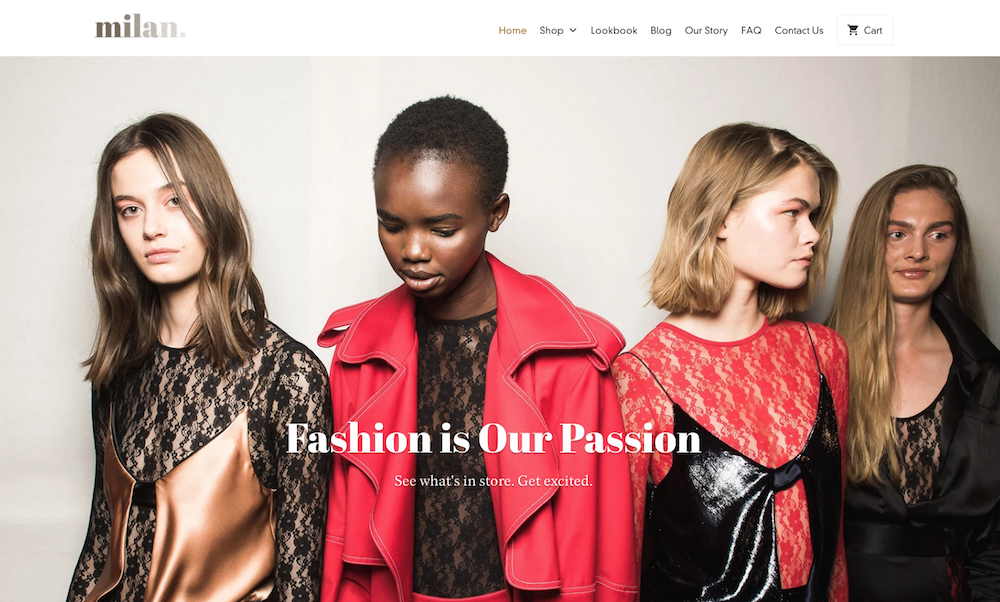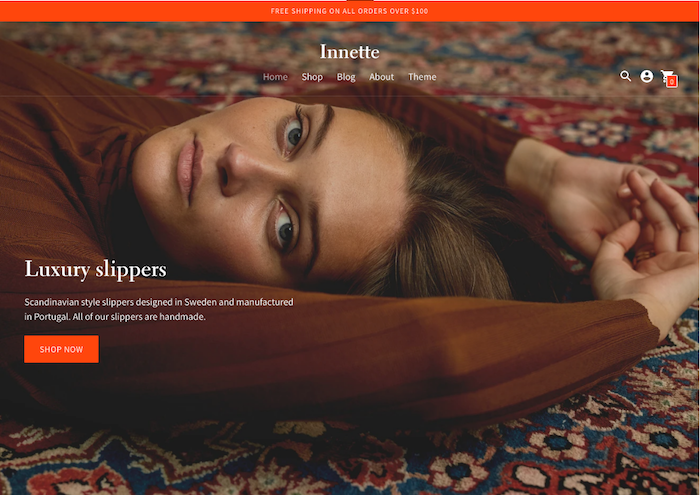6 Questions to Answer in Choosing the Right Theme for Your Ecommerce Site

Mobilia is a theme from Shopify designed specifically for retailers with large product catalogs
Let’s begin by dispelling myths: When retailers build their ecommerce site from a theme, yes, they’re using a template, but the end result can be far from cookie-cutter. Companies of all sizes – including those with dozens of employees and millions in annual sales – can establish a unique ecommerce site and grow their business with a theme as the foundation.
Every ecommerce team has to decide whether to build their online store from scratch or from a pre-existing theme. For those that opt to build from a theme, they’ll get the huge benefit of pre-built core functionality that’s proven to work. This includes elements like category pages with filter and sort options, product pages with color swatches, image gallery swap on variant select, advanced technical specifications, and related products.
Theme developers build themes based on people’s well-established shopping habits, so retailers don’t have to worry about reinventing ecommerce site basics. Instead merchants can focus time and energy on other aspects of their business, such as product development, marketing, and customer service.
Further, theme customizations create differentiators. The theme is the starting point, and within most platforms, developers can build virtually anything on top of it.
When we work with merchants on new theme builds, we gather a list of client needs and then create a short list of potential themes that will meet those needs out of the box. Oftentimes a theme will achieve most of the goals, especially if you’ve done your homework (see below) or completed a technical discovery up front, but it may leave a few needs unaddressed. From there, we develop a list of customizations to meet all of the retailer’s goals.
After you’ve chosen to leverage a theme for your online store, there’s another big decision: how do you go about choosing the right one? The Shopify theme store, for example, has hundreds of themes available. To get started, determine your company’s answers to these six questions.

1) How do we want to display products (and other items)?
When choosing a theme, form and function go hand-in-hand. To begin, brainstorm with your team about all the functional requirements of your site. For example, let’s suppose that your products stretch over 100 categories. Plus these categories are hierarchical and they all need to be arranged in a specific way. Maybe you also want the menu to contain images. In that case, we’ll need a theme that has mega-menu capability.
Go through this exercise with every element of your site. For instance, how do you want to display the Frequently Asked Questions? A lot of retailers choose to present FAQs in an accordion style, so readers don’t feel overwhelmed by all the information at first glance. A development team can build in this kind of functionality, but your business could save resources by choosing a theme that natively offers accordion display.
2) How big is our product catalog?
As we mentioned in the example above, some brands sell hundreds of product categories, and it’s important to shop for a theme with catalog size in mind. In fact, Shopify lets merchants filter themes by catalog size, but Magento does not define them in this way. A retailer that sells one or two products in a couple of variations will need a different foundation than a company that offers 100 different garments.
For wearable brands in particular, think about how you want to display product variants, i.e. sizes and colors. A fashion retailer’s theme needs will be quite different from a home decor shop, for example, where customers are buying the one and only version of a vase. Apparel merchants want a theme that handles variants – and variant selection – very well.
3) How do we want people to be able to buy?
When a customer lands on your ecommerce site, do you want them to be able to shop right from the homepage? Or maybe you want them to go to the Product Listings Page (PLP) and only be able to add items to their cart from there?
Evaluate the journey that you want customers to take before you select your theme. Some themes have built-in tools to accommodate homepage shopping, for instance. Additionally, some retailers get good traction with a “Quick View” option that creates a pop-up overlay so people can choose options and shop from right where they are.
Also, give special attention to whether or not you want your site to have a mini or fly-out cart. This one in particular is important because it can be a significant development load to build a fly-out cart into a theme that doesn’t already offer one. Meanwhile, if you choose a theme that accommodates this right from the start, you’re avoiding extra development costs.

4) What does our marketing team want to do?
Creative marketing teams can do A LOT with a theme. For instance, how does your team want to tell the story of your brand? Maybe it’s through a huge hero photo on the homepage paired with client testimonials. Or maybe they want to share your company’s narrative through a timeline. Whatever they decide, you’ll want to make sure that the theme you’re choosing contains modules that can be used in these ways.
If you want your marketing team to curate these kinds of branding materials – and we believe you do – involve them early in the process of choosing a theme. Let them review the theme and see what’s available to them. Get their sign off. Creative marketing people are going to be able to envision how to maximize the theme’s tools.
5) Who is going to manage our online store?
The ecommerce theme serves as the foundation for your customers’ experience with your online store – and your employee’s. With this in mind, it needs to deliver an intuitive administrative experience. Some merchants are enticed to implement a theme with all sorts of creative features, but if the person using it has to know HTML, it won’t be a good option. (Unless you plan to always hire people with HTML skills to manage it.) Retailers tend to think about themes from the frontend perspective, but it’s worth it to consider the ease-of-use, too. Thankfully, most theme developers give this careful consideration, but it’s good to confirm this before you start building.
6) Regarding customizations, should we build those into the theme or use an app?
As we mentioned in the beginning, themes usually address most needs around functionality and display. But probably not all. To get your online store exactly as you want it and differentiate your store, you can employ apps or build out custom features specific to your business into the theme.
Keep in mind that if you build features into the theme, you’ll be able to control the functionality of those features. You have full access to everything in the theme. Looking to the future, your development team can help you grow and expand it.
But the thing to be aware of is that you’re responsible for the maintenance of that feature. If your developer builds something into checkout for Shopify Plus, for example, and Shopify updates checkout, they will have to go in and make sure that feature still works or potentially update it. All this depends on how mission critical the feature is and how tolerant you are of having someone come in and work on it later, if it needs maintenance.
On the other hand, if you decide to add features through a third-party app, you’ll only have access to the configuration settings provided by the app developers. You don’t control that code, how efficient it is, what it does, where it’s served from, etc. And you’re at the mercy of the app developers. (App maintenance isn’t necessarily even across the board.) Also keep in mind that apps can inject a lot of overhead in the form of site load and therefore site speed, as well as ongoing costs. Now, of course, retailers use apps all the time for all kinds of features. But make sure to strategize with your team in advance about what features should be built into your theme versus what will work as an app.
When you’re choosing a theme for your online store, get your operations and marketing teams involved early in the process. Identify the things you can’t live without, and work with your dev team to identify the theme that checks as many of those boxes as possible. From there, work with your team to chart the best path forward with customizations to create the optimal full-service ecommerce site for your business.
